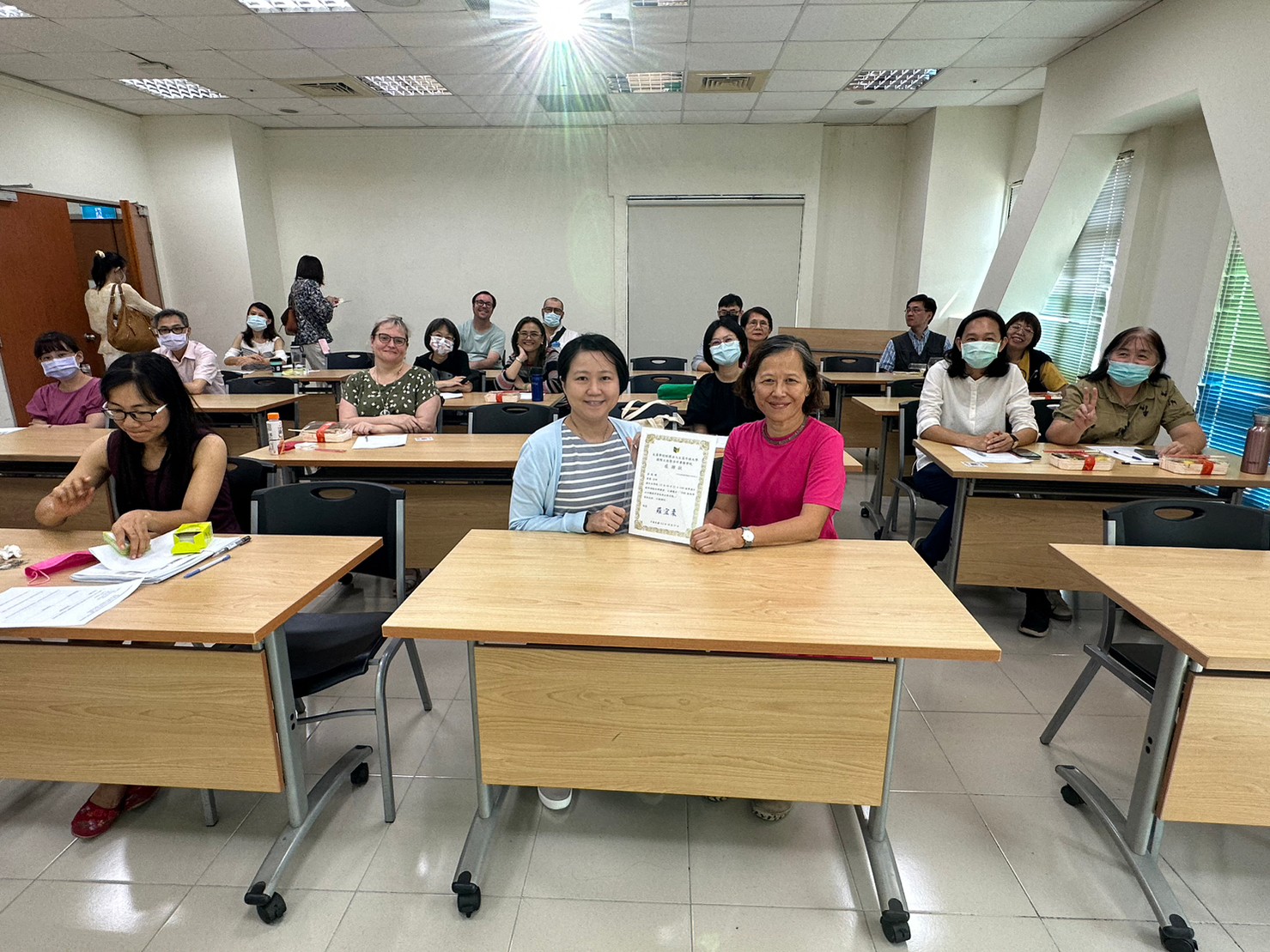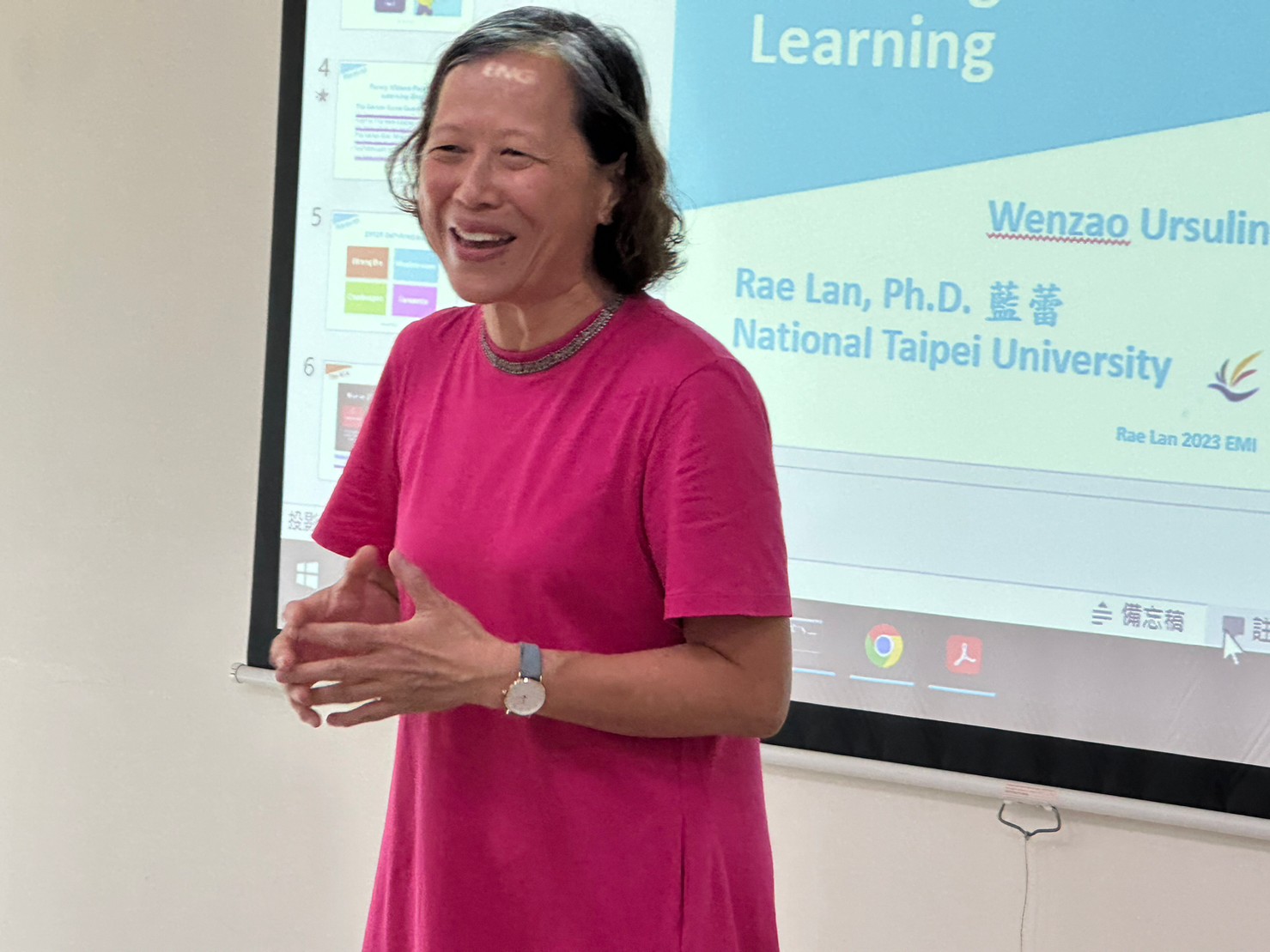【社群活動】 邁向EMI教學成功的祕訣 Workafrolic in EMI Teaching
發布日期 2023-11-01 13:35:00
The third event in the college EMI community was hosted by chairperson Rae Lan from the Department of Foreign Languages and Applied Linguistics at National Taipei University on October 27th. She shared questioning strategies through funny videos related to learning English, and introduced SWCR Self-Analysis, transforming the familiar SWOT analysis into Strengths, Weaknesses, Challenges, and Rewards. In her presentation, she emphasized the importance of cultivating students with the 4Cs (Critical Thinking, Communication, Collaboration, and Creativity) and the 5E Model (Engage, Explore, Explain, Elaborate, and Evaluate) to support students as they ask questions and conduct experiments to find the answers.
Dr. Lan mentioned that the key to success in EMI teaching lies not only in the teacher's English proficiency or confidence but also in observing students' learning patterns and inspiring them to think creatively. Increasing interaction and discussion is a great way to achieve this. It's worth noting that EMI teaching strategies primarily stem from Bloom's taxonomy, an educational framework developed by American educational psychologist Benjamin Bloom. By continuously generating ideas, evaluating them, and ultimately applying them to real-life situations, students can gain a profound understanding and solidify their knowledge.
To enhance EMI teaching further, various group activities are being conducted for teachers. Firstly, teachers engage in the "1234 Speech Activity," introducing each other's three most interesting personal traits through a series of questions within a limited time. Following that, the "Thought Question Activity" allows teachers to practice old language learning strategies (LLSs) and extend to new ones. Director Lan mentioned, "There is no greater calling than teaching. We are not workaholics! We can be workafrolics, finding passion and fun in our diligent work."
10月27日,由國立台北大學外語與應用語言學系藍蕾主任主持了學院EMI社群的第三場活動。她透過與英語學習相關的有趣影片分享發問策略,並介紹SWCR自我分析法,將大家熟悉的SWOT分析法轉化為優勢、弱點、挑戰與獎勵。在演講中,她強調培養學生的4C(批判性思考、溝通、協作和創造)和5E模型(參與、探索、解釋、闡釋和評估)的重要性,以支援學生提出問題並進行實驗來尋找答案。
藍博士提到,EMI教學成功的關鍵不只在於老師的英語能力或信心,更重要的是觀察學生的學習模式,啟發他們的創意思維。增加互動和討論是達到這個目的的好方法。值得注意的是,EMI 教學策略主要源自美國教育心理學家 Benjamin Bloom 所提出的教育架構 Bloom's taxonomy。透過不斷地產生想法、評估想法,並最終將其應用於現實生活情境中,學生可以獲得深刻的理解並鞏固其知識。
為了進一步加強 EMI 教學,教師們正進行各種團體活動。首先,教師們參與 「1234演講活動」,在有限的時間內透過一連串的問題介紹彼此最有趣的三個個人特質。接著,「思考發問活動」讓教師練習舊有的語言學習策略(LLSs),並延伸至新的學習策略。藍主任提到:「沒有比教學更偉大的使命。我們不是工作狂!我們可以是工作狂,在勤奮的工作中找到激情和樂趣」。
#EMI #Questioning_Strategies #Workafrolics

(Dr. Chou, chairperson of department of Foreign Language Instruction, presents a certificate of appreciation on behalf of the department and takes a group photo with the participants.)

(Dr. Lan introduces her extensive experience in EM teaching.)

(Various group activities are being conducted for teachers.)








